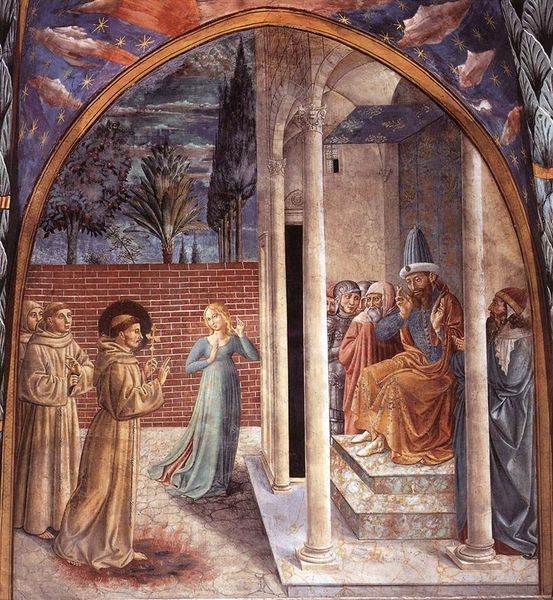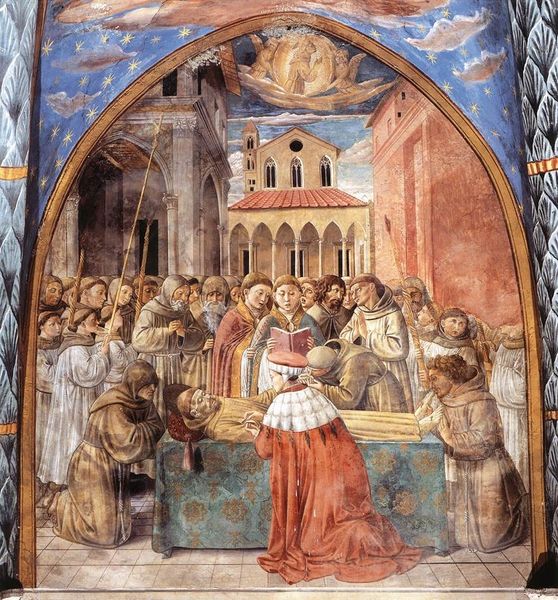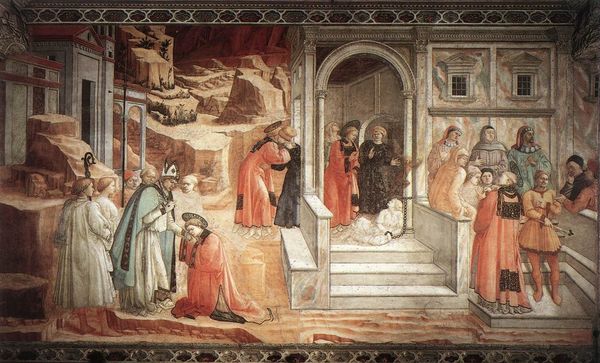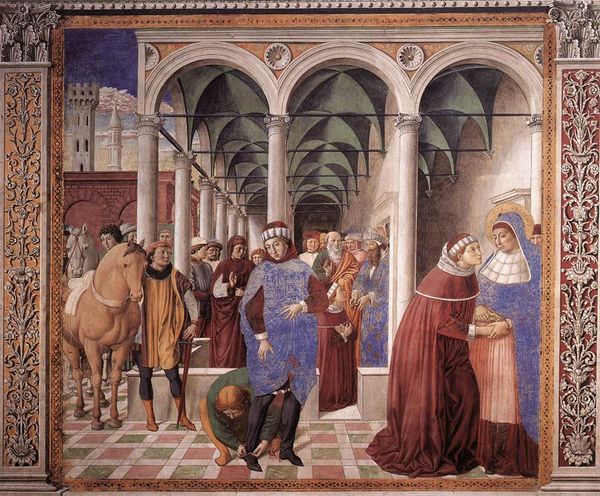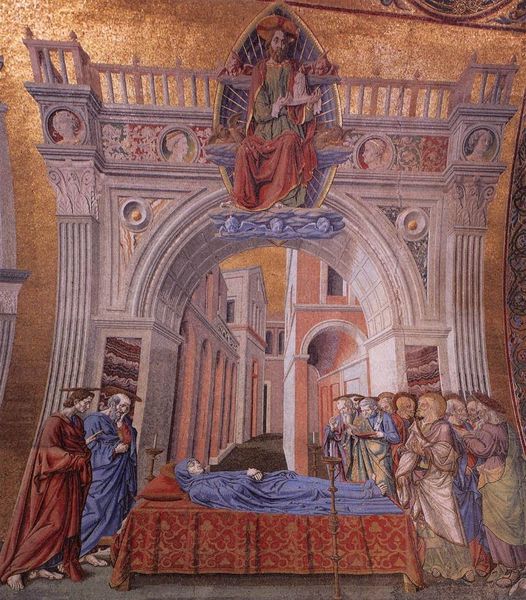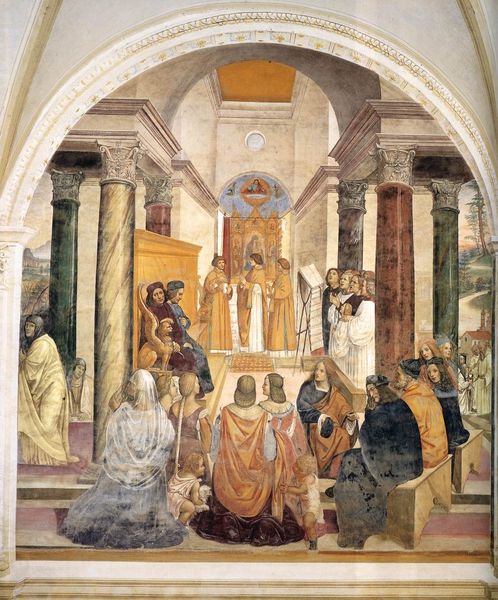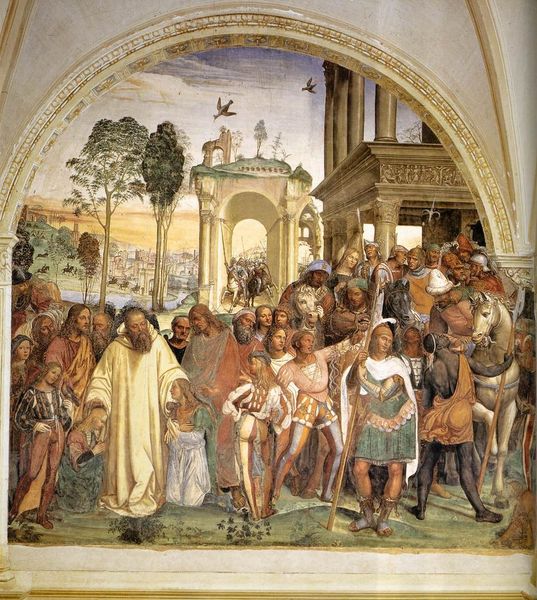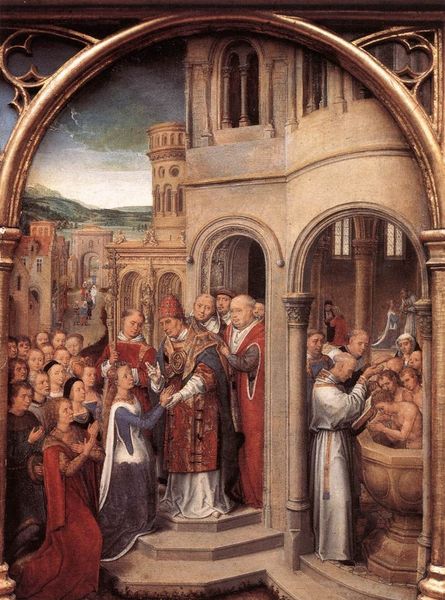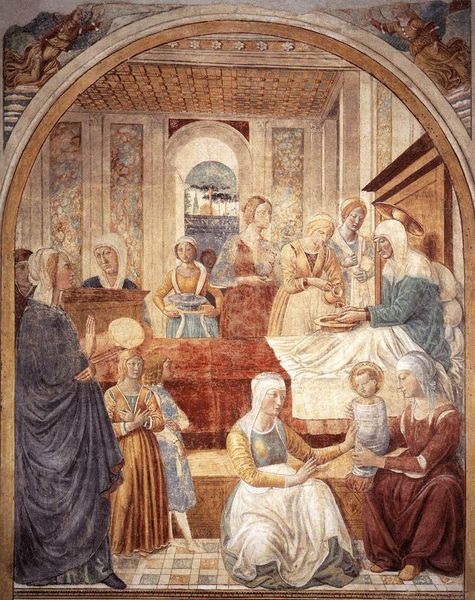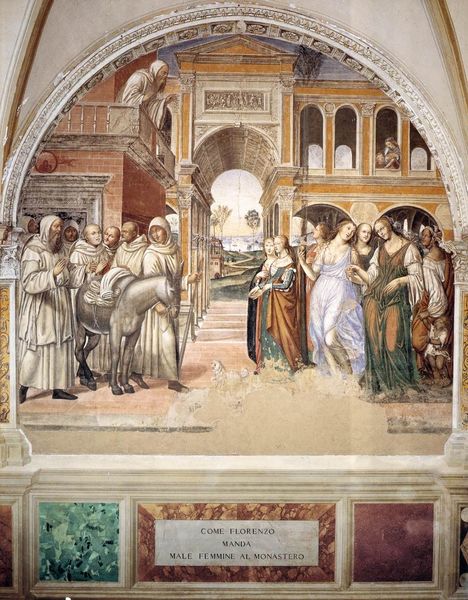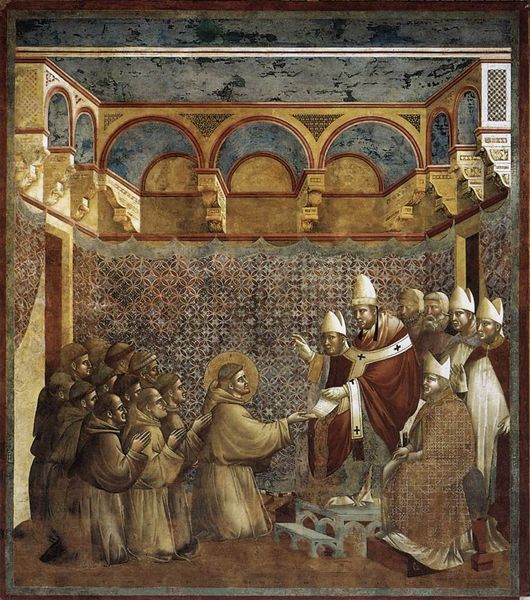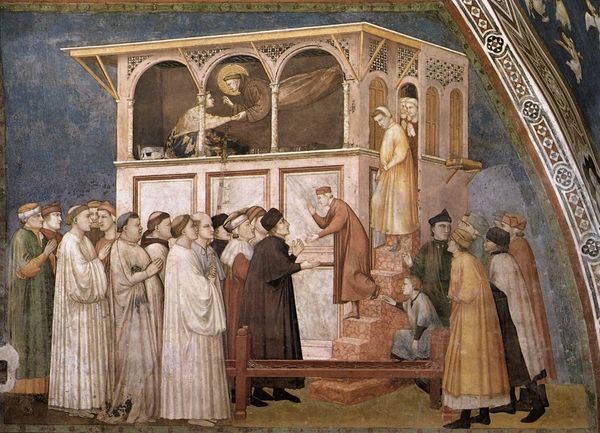
tempera, painting, fresco
#
narrative-art
#
tempera
#
painting
#
figuration
#
fresco
#
oil painting
#
christianity
#
history-painting
#
italian-renaissance
Dimensions: 304 x 220 cm
Copyright: Public domain
Curator: So much stillness and yet, it feels utterly vibrant, doesn't it? Editor: Yes, it does. It’s as if Benozzo Gozzoli, around 1452, paused time within this fresco—entitled “Establishment of the Manger at Greccio”—allowing us to eavesdrop on a pivotal moment of faith. It’s Renaissance art embracing a kind of narrative transparency. Curator: Right! There's almost a theatrical quality. The careful architecture in the background reminds us that even spiritual moments are witnessed, staged, performed for a community—then and now. And look how he plays with perspective to invite you into this almost intimate scene. Editor: And how odd! An indoor nativity with real barnyard animals inside a Gothic basilica... Very bizarre if you think about it too much. But it makes you reflect, perhaps, that something divine, like the incarnation, could just spring out anywhere! Curator: Precisely. It speaks to the democratizing impulse of the Franciscan order that this work illustrates, really. Greccio was a small town and Saint Francis staged the Nativity to allow even the most unlettered person access to a divine story. So even the animals play a central role in creating this accessibility. Editor: You know, beyond the socio-religious impact of works like these, what really grabs me is the expression on the Saint’s face while he holds the Christ Child—as if Gozzoli caught the purest reflection of love imaginable. Like a fleeting spark in the infinite night. Curator: Yes, an almost dreamlike sense pervades, yet it is grounded by that intense gaze. This balance between ethereal and earthy reminds us of art’s enduring power to make complex spiritual narratives felt on a human scale. Editor: Yes, this really resonates, like how an ancient story gets etched on our mind not by its dogma, but through the vivid colors of our own imagination. Curator: Well put. Gozzoli managed to create something timeless and deeply moving, even centuries later. Editor: It definitely reminds us that masterpieces don’t only need technical excellence but a whole lot of genuine passion that can survive over time.
Comments
No comments
Be the first to comment and join the conversation on the ultimate creative platform.
